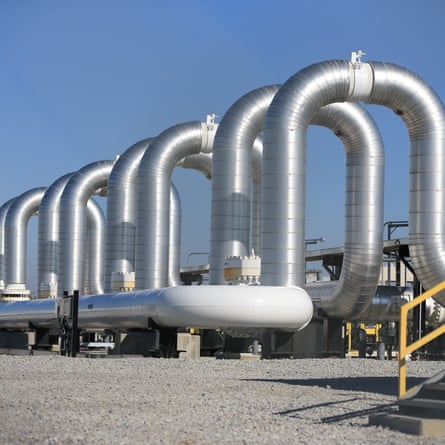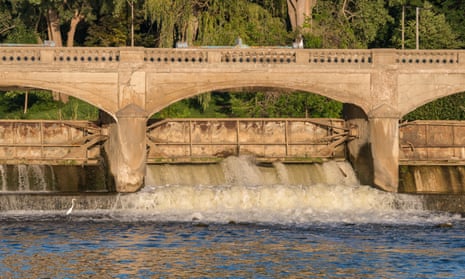In his first speech to Congress on 1 March, US president Donald Trump reiterated his pledge of huge extra investment in US infrastructure. His ambition is clear, but there are considerable obstacles to achieving it, including the huge amount of state and local control over what gets spent.
The infrastructure deficit in the US is the stuff of legend. Year after year, thinktanks and lobby groups retell the same story of defective bridges, rundown airports and ageing power lines.
The American Society of Civil Engineers has just given America’s infrastructure a mark of D+, illustrating what it calls the clear impact of lack of investment. The society estimates that, over the 10 years up to 2025, spending will be $1.44tn (£1.19tn) lower than needed to keep the country’s infrastructure assets in adequate condition. Its report, out on 9 March, highlights the almost catastrophic state of the country’s insfrastructure. While they disagree on the answer, everyone in Washington from Donald Trump to Bernie Sanders agrees this is holding back productivity and must change
Last month, Trump repeated his promise to raise an extra $1tn (£0.8tn) for infrastructure over 10 years. By providing $137bn (£113bn) in tax credits (pdf), Trump’s team hopes to leverage $1tn in private investment. The resulting infrastructure would be delivered through the public-private partnership model (PPP, or P3 in the US), with private firms building and maintaining the assets on long-term contracts.
But even if the $1tn materialises, experts doubt whether it will lead to many more projects. P3s are already being delivered across the US, and a tax credit could simply sweeten deals that would have happened anyway.
“It’s hard to see how tax credits would create new sources of capital and frankly, private capital is not in short supply,” says Jill Jamieson, managing director of the infrastructure advisory practice at consultant JLL. “Pension funds, infrastructure funds, asset managers and others are already seeking well-structured infrastructure projects to invest in.”
While the tax credit plan has been furiously debated, in truth it is only likely to plug a small part of the infrastructure deficit. Trump’s infrastructure plans will not succeed or fail in Treasury tax breaks or Congress, but in the states and localities that oversee most of the delivery, and raise most of the money.
P3 projects accounted for $2.4bn (£1.98bn) of new infrastructure investment in the US in 2015; even if this figure increased tenfold, it would still be only a fraction of the hundreds of billions (pdf) raised annually through the main source of financing, the municipal bond market. Currently, municipal bonds issued by states and local governments accounts for an estimated three-quarters (pdf) of all public infrastructure spend, and its tax exemption makes it cheap to borrow.
Most public infrastructure in the US is procured at state or local level and while the federal government frequently offers funding and help, it cannot impose its vision. In 2011, Florida’s governor rejected over $2bn in federal money when he cancelled plans for a high-speed rail line, punching a hole in Obama’s vision for a nationwide high-speed network.
One of the most acute challenges is persuading state and local governments to invest properly in maintaining existing assets, instead of constantly cutting the ribbon on shiny new ones, and to adequately fund unfashionable projects like water systems. The recent water supply poisoning caused by ageing lead pipes in Flint, Michigan, was a lurid reminder of what happens when maintenance spending keeps getting deferred, but it was not an isolated case.
An investigation by USA Today last year found that the kind of lead contamination reported in Flint was also going on at nearly 2,000 water utilities across the country. Replacing the old lead pipes is expected to cost tens of billions of dollars. Hundreds of millions more are required to invest in the new water treatment plants and sewers needed to raise water quality, an issue Trump has promised to champion.
Trump may not control the states, but already there are signs he is gathering sticks and carrots to use on them. Ken Miller, state treasurer of Oklahoma, says the White House and Congress Republicans are considering capping the tax exemption for municipal bonds, a divisive move that could increase reliance on private capital – and federal funds. A carrot is promised in the form of increased federal loans to deliver state water projects, which could be co-financed with private money.
Trump might have more influence over nationally significant projects if they fall under the sway of another private partnership: his new infrastructure council. Led by two fellow property developers, the council will, the president has told reporters (paywall), expand some projects and “throw out” others. While the council won’t have any power to take over projects managed by states and cities, it could make or break them if it decides whether to award federal funding.

Federally supported projects must also meet federal environmental rules, which look set to be slashed in the wake of Trump’s approval of the Keystone XL pipeline. The impact of this is highly controversial, but it’s also true that reducing or expediting the approval process could stop some infrastructure projects being abandoned or deferred.
Taken individually, none of Trump’s proposals look set to unleash a torrent of infrastructure development. But experts agree that change is coming. Already, some states are prioritising maintaining infrastructure over new construction – Miller says most state financing to 2020 is expected to be directed to maintenance – and looking for new sources of capital. New Jersey plans to sell transport bonds directly to its state pension funds, while Chicago has been pioneering an infrastructure trust that acts as an expert fundraising and project delivery body within the city government.
“I think most of the innovation we’re going to see is going to come from outside of Washington, not inside,” says Robert Puentes, chief executive of the Eno Center for Transportation thinktank. In that case, the Trump administration may find that setting a trillion-dollar target is less helpful than the more mundane task of helping lower-tier governments do their job.
Talk to us on Twitter via @Guardianpublic and sign up for your free weekly Guardian Public Leaders newsletter with news and analysis sent direct to you every Thursday.

Comments (…)
Sign in or create your Guardian account to join the discussion